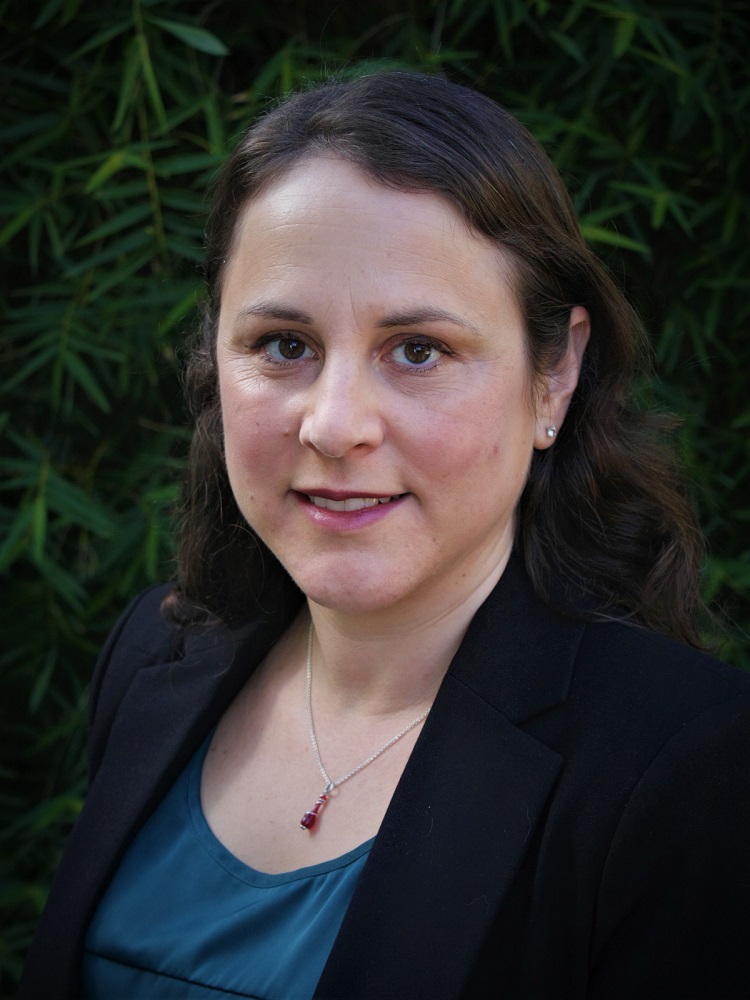
Open water swimming in San Francisco Bay has become a popular sport and grew in popularity during the pandemic. Possible thanks to the Bay’s cleaner waters. (photo by Kelly Sullivan, Berkeleyside)
From SFEI’s 2022, The Pulse of the Bay: 50 Years After the Clean Water Act. Reposted with permission.

Lorien Fono, BACWA Executive Director
The Clean Water Act serves as the legal framework for how the clean water community views our mission. The National Pollutant Discharge Elimination System (NPDES) program established by the Clean Water Act provides the regulatory structure for wastewater treatment plants to comply with discharge standards and prohibitions.
Since the adoption of the Clean Water Act, investments in clean water infrastructure have resulted in dramatically improved water quality in San Francisco Bay, even in the face of a near-doubling of regional population. Most of our facilities were built with federal grant funding that came with the adoption of the Clean Water Act.
While the Clean Water Act is foundational, the Bay Area clean water community has extended its vision beyond the minimum requirements of the law to broaden what it means to be stewards of the environment and the community in three major ways.
When the Clean Water Act was adopted, its framers did not envision the need to adapt to a changing climate. On the surface, this adaptation means protecting our low-lying facilities from sea level rise; adjusting our treatment processes to adapt to water conservation, which reduces sanitary sewer flows and produces more concentrated wastewater; and adjusting to changing precipitation patterns.
Our ability to continue to operate under these new conditions is not our sole concern. We see our responsibility to our communities as extending beyond our fence lines, and our charge to protect our ecosystem as extending beyond the area of influence of our outfalls.
This recognition of climate change impacts is driving our community to form partnerships that will allow us to play a role in both climate change adaptation and mitigation. Drought is driving an increase in recycled water production to improve our region’s water supply resiliency.
According to a BACWA recycled water study now in progress, wastewater agencies in our region are expected to more than double their recycled water production over the next 20 years. Wastewater agencies in the Bay Area are also planning and implementing treatment wetlands that can improve effluent quality prior to discharge, while simultaneously protecting upland infrastructure and enhancing habitat.
Climate challenges and opportunities extend beyond just our traditional clean water mandate. The State is looking to POTWs as critical infrastructure to receive green waste and food waste from our communities, transform them into energy via co-digestion, and find beneficial end uses for the resulting biosolids that also sequester carbon.
The clean water community is thus assuming the cross-disciplinary tasks of water resources, carbon, and energy management. We are taking on these new responsibilities while also controlling air emissions that primarily impact the often overburdened communities that live near our facilities.
When the Clean Water Act was first implemented in the 1970s, the focus was controlling discharges of suspended solids, organic material that consumes oxygen, and industrial pollutants. Over time, NPDES permits have come to regulate many additional toxic pollutants, such as solvents and legacy pesticides.
Our agencies have been extremely successful at meeting the effluent standards introduced under this framework. However, the major ecosystem challenges of our time keep evolving, requiring
a knowledge of local impacts. While nutrients have garnered much attention on a national level, gaining a nuanced understanding about the impact of nutrients on San Francisco Bay ecosystems requires a regional approach. Regionally relevant decision-making has been the focus of
the Nutrient Management Strategy (NMS), a collaborative made up of regulators, wastewater agencies, and other regional stakeholders. The NMS provides a structure for allocating funding, largely provided via the POTW community, to best inform Bay nutrient policy. The NMS serves as a national model of multi-stakeholder collaboration for guiding science to make management decisions.
The regional clean water community has also been proactive at considering the emerging contaminants that are not yet regulated through the Clean Water Act. We work closely with the Regional Monitoring Program (RMP) to examine wastewater as a possible pathway to the Bay for pesticides, pharmaceuticals, microplastics, and other trace constituents. We have worked with the Regional Water Board to provide a sustainable funding source for the RMP’s emerging contaminants program.
In 2020, the State Water Board issued a blanket investigative order to POTWs throughout the state to conduct monitoring of per- and polyfluorinated alkyl substances (PFAS) in influent, effluent, and biosolids. Because of the success of our collaboration with the RMP, the State Water Board allowed the POTWs in our region to perform a special study to monitor at representative facilities and investigate the sources of PFAS to our facilities, in lieu of the blanket monitoring requirements that were issued to POTWs in other regions.
This example illustrates how our track record in collaboration and support for science-based decision-making allow us to take a more targeted, hypothesis-driven approach to today’s major environmental questions.
The Clean Water Act charges POTWs to serve as stewards of water resources, but our communities expect that we take a more holistic view of our role in society. One illustration of this mission is the way agencies in our region stepped up to provide samples for wastewater surveillance to inform public health management during the COVID-19 pandemic. This service falls outside of our traditional clean water role, but has been a key feature of pandemic response.
With enhanced focus on environmental justice, the clean water community has been taking a hard look at our role within the communities we serve. Historically, our direct engagement with
our communities has been focused on protecting public health by keeping the public away from sewers and wastewater. We also engage in public education to support pollution prevention and protect subsistence fishing populations from contaminants such as mercury and PCBs that bioaccumulate in fish.
While this continues to be important work, it has become increasingly clear that our strategies for decision-making impacting the communities we serve must be re-envisioned. A major charge of this decade will to develop relationships with historically marginalized communities to incorporate diverse voices into planning.
The Clean Water Act will continue to serve as a foundation for our operations and long-term planning. The Bay region’s clean water community views its mission as extending beyond the minimum requirements of the Clean Water Act in how we serve our neighborhoods and ecosystems. The past 50 years have brought significant evolution in our role, and we expect the next 50 years to continue and accelerate that trend.
Lorien Fono is the Executive Director of the Bay Area Clean Water Agencies (BACWA).
Read the 2022 The Pulse of the Bay: 50 Years After the Clean Water Act. Learn about SFEI’s Regional Monitoring Program for Water Quality in San Francisco Bay.